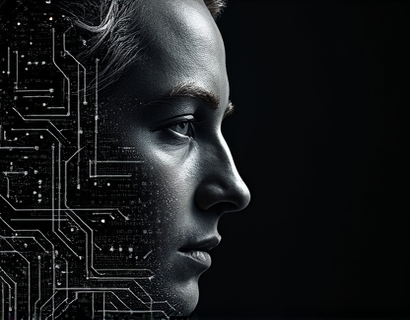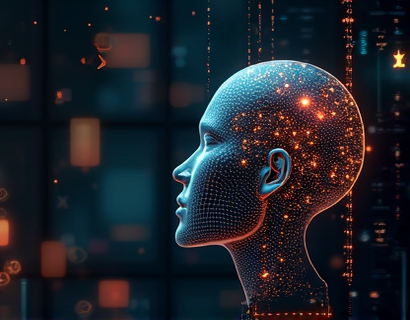Transforming Access to Architecture Insights: The Power of AI-Powered Chat Interfaces
The integration of artificial intelligence in the field of architecture has opened new avenues for accessing expert insights and specialized information. An AI-powered chat interface is revolutionizing how users of all ages interact with architectural knowledge, ensuring a safe, educational, and reliable experience. This innovative approach not only democratizes access to complex architectural data but also enhances learning and professional development across various demographics.
Enhancing Educational Experiences for Students and Educators
For students and educators in architecture, the traditional methods of accessing information can be time-consuming and often overwhelming. An AI-powered chat interface simplifies this process by providing immediate, accurate, and relevant insights into various aspects of architecture. This tool can serve as a virtual mentor, guiding users through complex concepts, historical contexts, and contemporary trends in the field.
Moreover, the chat interface can be tailored to different educational levels, ensuring content is appropriate and understandable for its intended audience. For younger students, the interface can offer simplified explanations and interactive elements, making learning engaging and fun. For higher education students and professionals, it can delve into more detailed and specialized topics, supporting advanced learning and research.
Ensuring Safety and Accessibility
One of the key advantages of an AI-powered chat interface in architecture is its focus on safety and accessibility. The content provided is rigorously verified to ensure accuracy and reliability, which is crucial in a field where precision is paramount. This verification process helps in maintaining the integrity of the information, protecting users from misinformation that could lead to errors in design or construction.
Accessibility is another critical aspect. The chat interface is designed to be user-friendly, with a focus on inclusivity. It can accommodate users with different abilities and technical backgrounds, making architectural knowledge accessible to a broader audience. For those with limited access to traditional educational resources, this technology bridges the gap, offering a valuable learning tool regardless of geographical or socio-economic constraints.
Specialized Information for Professionals
Professionals in the architecture industry can also benefit significantly from an AI-powered chat interface. The platform can provide up-to-date information on industry standards, regulatory changes, and innovative practices. This continuous flow of specialized knowledge helps architects stay current and competitive in a rapidly evolving field.
Additionally, the chat interface can facilitate networking opportunities by connecting professionals with experts and peers. This feature fosters collaboration and the exchange of ideas, driving innovation and excellence in architectural design and practice.
Interactive Learning and Exploration
The interactive nature of an AI-powered chat interface enhances the learning experience. Users can ask questions, receive instant feedback, and explore topics in depth. This dynamic interaction encourages active learning, allowing users to engage with the material more effectively. The chat can also incorporate multimedia elements such as images, videos, and 3D models, providing a rich and immersive educational experience.
For example, a student can ask about the principles of sustainable design and receive a detailed explanation accompanied by examples of successful sustainable projects. This not only reinforces theoretical knowledge but also illustrates practical applications, making the learning process more meaningful.
Personalized Learning Paths
Another significant benefit of an AI-powered chat interface is its ability to create personalized learning paths. By analyzing user interactions and preferences, the chat can tailor content to meet individual needs and learning styles. This personalized approach ensures that users receive the most relevant and beneficial information, enhancing their overall educational experience.
For instance, a user with a specific interest in historic preservation can engage in conversations that delve into the challenges and solutions in this niche area. The chat can recommend resources, case studies, and expert opinions that align with the user's interests, fostering a deeper understanding and passion for the subject.
Building a Community of Learners
The AI-powered chat interface can also serve as a platform for building a community of learners and professionals. Users can join discussions, share insights, and collaborate on projects. This community aspect fosters a sense of belonging and support, which is essential for ongoing learning and professional growth.
Forums and discussion boards integrated into the chat interface can host threads on various topics, from beginner questions to advanced research discussions. Moderators can ensure that the content remains high-quality and relevant, maintaining a positive and productive environment for all participants.
Addressing Common Concerns and Misconceptions
One common concern about AI-powered chat interfaces in education is the potential for over-reliance on technology. However, when used complementarily to traditional learning methods, these tools can significantly enhance understanding and retention of complex concepts. The chat interface serves as a supplementary resource, not a replacement for hands-on experience and human guidance.
Another misconception is that AI cannot provide the depth of knowledge required in a field like architecture. Advanced AI algorithms, trained on vast datasets of architectural knowledge, can offer insights that rival those of human experts. The key is to ensure that the AI is continuously updated and refined to maintain the highest level of accuracy and relevance.
Future Prospects and Innovations
The future of AI-powered chat interfaces in architecture holds immense potential. As AI technology advances, these platforms can incorporate more sophisticated features such as natural language processing, emotional intelligence, and predictive analytics. These enhancements will further improve the user experience, making interactions more intuitive and personalized.
Additionally, the integration of virtual and augmented reality with AI chat interfaces can create immersive learning environments. Users can visualize architectural designs in 3D, explore virtual construction sites, and interact with digital models in real-time. This fusion of technologies will revolutionize how architectural knowledge is taught and applied.
Conclusion
The AI-powered chat interface represents a significant leap forward in making architectural knowledge accessible, safe, and educational for users of all ages. By providing accurate, verified content and fostering a supportive learning community, these platforms empower individuals to explore and excel in the field of architecture. As technology continues to evolve, the potential for innovation and impact in architectural education and practice is vast, promising a brighter and more informed future for all stakeholders.









































